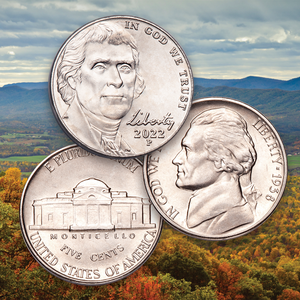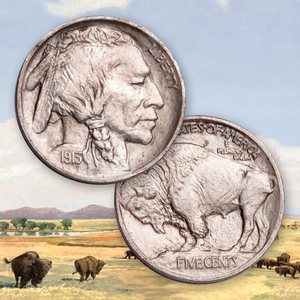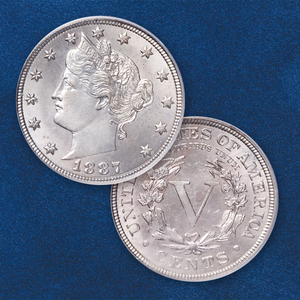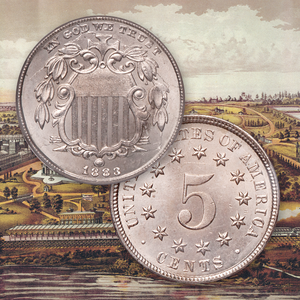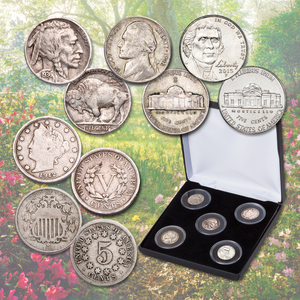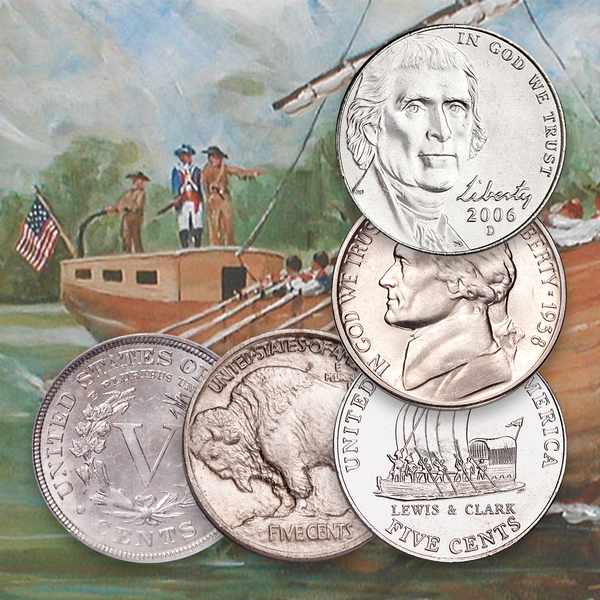Nickel Coins
The Coinage Act of 1792 created the nation's first five-cent coin: a silver half disme, or half dime. Much later, the Coinage Act of 1866 created a new five-cent coin. Like the new three-cent piece that had debuted the year before, it was made of a copper-nickel alloy and called a nickel. Both half dimes and nickels were minted and used interchangeably until 1873, when the silver half dime was discontinued. At Littleton Coin, we have a wide selection of U.S. nickels for sale, from the early classics to the latest releases. Shop nickel coins by type, date, grade and more – all expertly graded and backed by our 45-day Money Back Guarantee of Satisfaction!
Read more
U.S. Nickel Designs Over Time
To date, the U.S. Mint has issued just four major series of U.S. nickels. The first American nickels featured the Shield obverse design, which was based on the two-cent coin. The second series is known as Liberty Head nickels for their obverse design depicting the allegorical profile of Liberty. The third, by famed sculptor James Earle Fraser, paid homage to the western frontier. Its obverse featured the profile of a Native American and the reverse showed an American buffalo. For this reason, they are called both Indian Head and Buffalo nickels.
The fourth and current series of U.S. nickel coins debuted in 1938 and depicts our nation's third president, Thomas Jefferson. The original Jefferson nickel obverse featured a left-facing profile. This was replaced by a new, right-facing profile in 2005. And in 2006, it changed again to the modern, forward-facing portrait we have today. To find out how collectors look for scarce U.S. nickel coins, read Coin Collecting by the Roll.
Issuing Mints
The Philadelphia and Denver mints issue U.S. nickels for circulation. The San Francisco Mint only briefly struck circulating nickels with the Indian Head/Buffalo design from 1913 to 1938, and circulating Jefferson nickels from 1968 to 1970.
Special Issues
During WWII, large quantities of nickel were needed for use in munitions, ships, tanks, aircraft, weapons and other items essential to the war effort. As a result, U.S. nickel coins were minted in 35% silver from 1942-1945. Struck by the Philadelphia and San Francisco Mints, these silver wartime nickels are distinguished by a larger mint mark located above Monticello's dome on the reverse. The 1942-P nickels marked the first use of the "P" mint mark for Philadelphia.
As part of a 2004-2005 anniversary mintage honoring the Lewis & Clark Expedition, nickels struck in 2005 depict Jefferson facing right on the obverse. You can read more about these special issues and their historical connection to Thomas Jefferson in our Heads & Tails blog post on the Westward Journey.
Always popular with collectors are American nickels nicknamed "racketeer" and "hobo" nickels. Find out more in our light-hearted blog post on what coins and April's Fool Day have in common.
In 2020, U.S. Mint Proof Sets included special bonus U.S. nickels struck at the West Point Mint.


